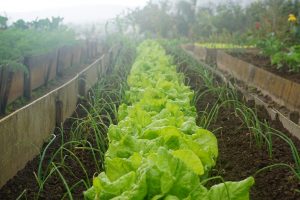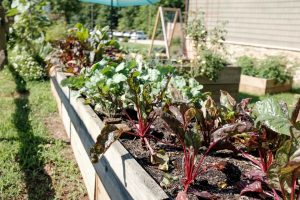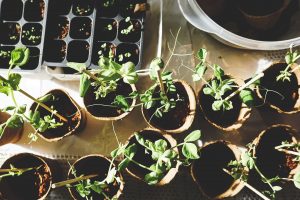Coronavirus Victory Gardens
By Emily Hill, guest blogger

Source: Kenan Kitchen via Unsplash
What would the food system look like in the United States if 40% of our fresh vegetables were grown at home? I don’t know about you, but to my ears this sounds like a farfetched statistic; perhaps a useful thought experiment, but unlikely to come to pass in a nation dominated by large-scale industrial agriculture and food deserts. Unlikely though it may seem, at the end of World War II 35-40% of fresh vegetables consumed on American soil were in fact produced by 20 million home, school, and community gardens. These “victory gardens” had their roots in the first World War, when the National War Garden Commission encouraged patriotic Americans to feed themselves and leave farm-grown produce for the troops.
The concept of victory gardens is receiving renewed attention in light of the coronavirus pandemic and widespread shelter-in-place orders. Economic insecurity, empty grocery store shelves, and hours of extra time at home are driving many to dabble in new homesteading habits. This is not the first time Americans have picked up a shovel in times of uncertainty. According to a 2013 report from the National Gardening Association, the number of families involved in gardening rose 17% between 2008-2013; there was a 38% increase among households making at or below $35,000/year. Sixty percent of these home gardeners reported that economic uncertainty (related to the Great Recession) was at least somewhat responsible for the new hobby. (It may also be noted that at this time Michelle Obama planted a garden on the South Lawn of the White House as part of her Let’s Move! initiative, 66 years after Eleanor Roosevelt did the same).
I have to confess, at this point, that I’m biased. Gardening has been a passion of mine for several years, and my garden has never received such devoted attention as now. Every new seedling, every cabbage worm, every squirrel hole, every bud – it’s all cause for celebration or despair. The neighbors directly adjoining our backyard have also constructed a garden bed, and we swap tools and tips over the fence. I go out to check on it at least ten times a day, and I find myself soothed by its rhythms. I can’t have been cut off from the outside world for that long if my beets haven’t even peeped their leaves above soil yet!
Gardening has doubtlessly been a balm for my soul during these troubled times. Unsurprisingly (to me), there is a body of evidence that gardening has beneficial impacts for many people, as well as for society. A literature review in a paper published in the Journal of Agriculture, Food Systems, and Community Development found that the health benefits of gardening include “increasing food and vegetable intake, fostering physical activity, reducing food insecurity, improving mental health, improving body mass index, and increasing social capital.” Gardening also yields ecosystem services, such as “increasing climate and water quality, supporting soil formation, fostering nutrient cycling, and sustaining biodiversity,” as well as “cultural (including spiritual), social, and recreational services.” That checks out.

Source: Jonathan Hanna via Unsplash (CCO)
Now, I would be remiss if I failed to mention the fly in the ointment (or the aphid on the kale plant, as it were). There are critics who point out that, while gardening doubtlessly has personal, environmental, and societal benefits, an infatuation with bolstering home gardeners could be the equivalent of switching to LED light bulbs and leaving the petroleum industry unchallenged. In short, interest in gardens fluctuates over time, coming in and out of fashion, and it shouldn’t be viewed as a replacement for a food system that feeds everyone, doesn’t exploit labor, and doesn’t cause environmental harm. That being said, several countries – Sri Lanka chief among them – view home gardens as an ancient, indigenous practice that should be supported; in fact, research published in the Journal of Agriculture & Food Security has found that Sri Lankan gardens, which are supported by the government, help increase nutrition and access to produce across social classes.
I recognize that more vegetables in the backyard will not be the solution to our nutritional and environmental woes, but if gardening rates rise during the pandemic, we can certainly view it as a silver lining in a dark time. At the very least, it is a positive outlet for that instinctual need to seek security and rhythm in times of upheaval.

